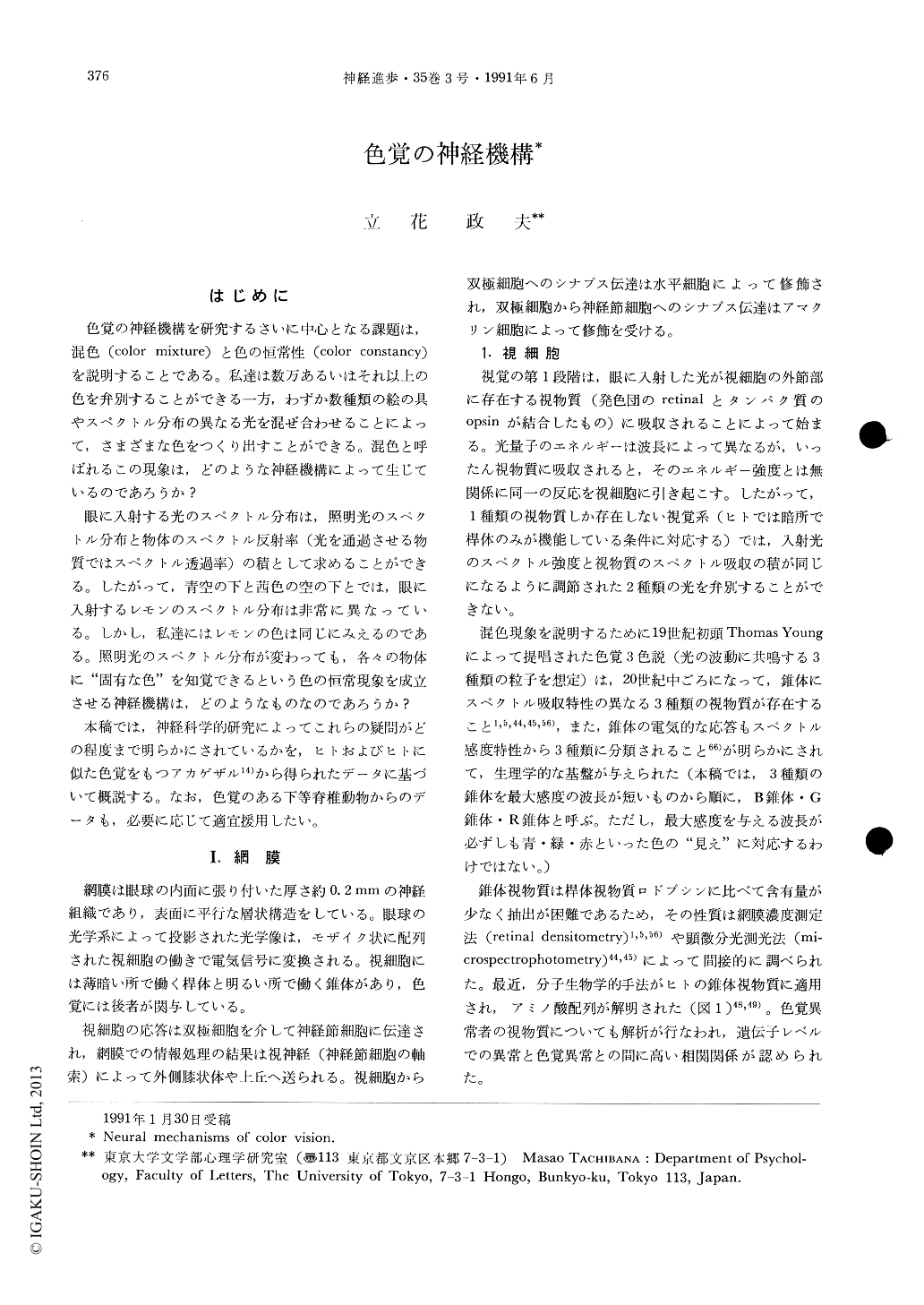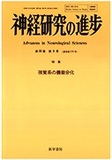Japanese
English
- 有料閲覧
- Abstract 文献概要
- 1ページ目 Look Inside
はじめに
色覚の神経機構を研究するさいに中心となる課題は,混色(color mixture)と色の恒常性(color constancy)を説明することである。私達は数万あるいはそれ以上の色を弁別することができる一方,わずか数種類の絵の具やスペクトル分布の異なる光を混ぜ合わせることによって,さまざまな色をつくり出すことができる。混色と呼ばれるこの現象は,どのような神経機構によって生じているのであろうか?
眼に入射する光のスペクトル分布は,照明光のスペクトル分布と物体のスペクトル反射率(光を通過させる物質ではスペクトル透過率)の積として求めることができる。したがって.青空の下と茜色の空の下とでは,眼に入射するレモンのスペクトル分布は非常に異なっている。しかし,私達にはレモンの色は同じにみえるのである。照明光のスペクトル分布が変わっても,各々の物体に“固有な色”を知覚できるという色の恒常現象を成立させる神経機構は,どのようなものなのであろうか?
The aim of this article is to show how and to what extent Neuroscientists revealed the secrets of color vision. Two main themes are described here, the color mixture and the color constancy. The former is the phenomenon that our color perception can be mimicked by the mixture of only three kinds of colors, say red, green and blue. The latter is the phenomenon that the color of an object does not change even when the illumination of the scene is varied from a blue sky to a flaming sunset.
The physiological basis for the trichromacy was found in 1960's; three kinds of cone pigments were discovered in different types of cones, and intracellular recordings of photoresponses from cones revealed that peaks of spectral sensitivity of cones could be categorized to three groups. The aminoacids sequences of three kinds of human cone pigments are now identified by the application of mole-cular biological techniques and it is demonstrated that there is a close relationship between the muta-tion of cone pigments and the abnormal color vision.

Copyright © 1991, Igaku-Shoin Ltd. All rights reserved.


